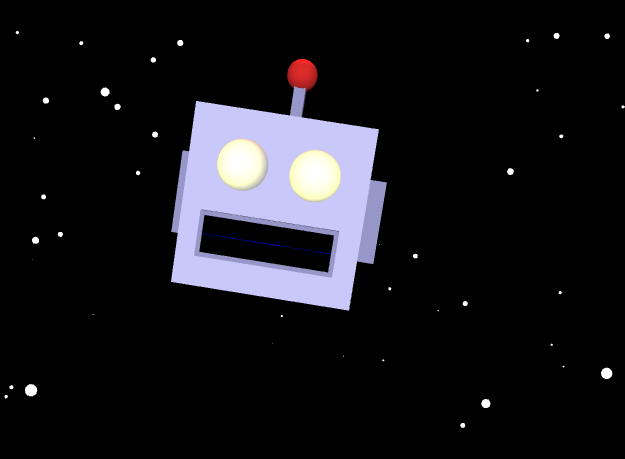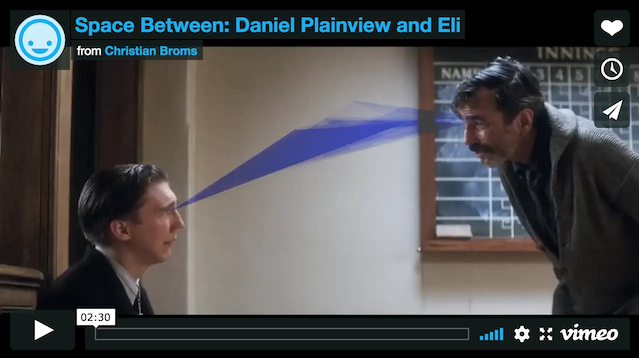Agenda
- Responses to Exit Tickets from 9/18.
- Attendance.
- Presentation about face-tracking in new media art.
- Work session.
Exit Tickets from 9/18:
- How can we learn more about how these templates are created? I'm not certain what you mean by "how they're created". The templates provided to you are demonstration code, intended to show, in the simplest possible way, how to use a given piece of technology, such as a face-tracker or body-tracker. Where do they come from? There's a food chain that often looks something like this: a CS researcher (such as Jason Saraghi, or Yaser Sheikh) releases a piece of technology (often programmed in Matlab, Python, or C++); an experienced media artist or collective (such as Kyle McDonald, or ml5.js) ports the technology to JavaScript, and releases a simple demo for an open-source programming toolkit, like p5.js or Processing; Dan Shiffman often explains this demo in a Coding Train video; I (may) also adapt the demo into a template that addresses the specific needs of our assignment, or highlights certain affordances.
- Are we gonna do a lecture on shaders? We can. A shader assignment is not part of our syllabus, but later int he semester, we'll have time to do an in-class exercise with shaders. I think shaders are an exciting tool, but using them well often puts a much heavier emphasis on math than I've wanted to require in this course.
- I might have some more questions on how to create silhouettes. See Kyle McDonald's OpenCV examples in p5.js, such as thresholding, background subtraction, frame differencing, contour detection.
- How can I start making 3D things? What's stopping you?
- how to check how many bends on the body? Not sure what you're asking. What's a "bend"? On what kind of body? Do you mean a body tracked with PoseNet/OpenPose, or do you mean the silhouette?
- Is there a way to use the facial points generated from the face tracking to create a shape and fill that shape with some kind of text? Sure, see this project by former CMU BFA student, Caroline Record.
- Is there a resource I can use to learn how to add buttons to my p5 sketch display? Yes; see the "DOM" section of the p5 Examples and reference -- such as this Button example.
- Is there a way to load multiple files like sounds or images without slowing down the p5 editor? It's worth making sure your assets don't have a larger file size than necessary -- make sure they're well trimmed, resized and compressed. That said, consider loading them in a preload function, as discussed here and here, to make things seem less laggy.
- Is it feasible to use 2 web cameras for this project? It might be easier to do this using Processing, which has easy access to multiple capture devices, as Joe Horowitz did last year. There's some low-level information on doing this in Chrome here, and you might be able to tinker with the arguments to createCapture() to create two capture objects. It looks like there's a deviceId parameter you may be able to pass into the Constraints object used during CreateCapture().
- What is the difference between pulling "inspiration" and "ripping off" the works of artists (say, kytten janae, and nick cave) when making advertisements, TV shows, etc? Would the right way be to credit the artist being made for advertisements, etc? This is a much longer discussion about when something is original, and how to properly acknowledge artistic debt. No clean answers here.
- Can these templates read the expression/movement of facial features? You can definitely detect subtle movements from face parts. If you need to detect expressions, consider using a classifier. It's not as difficult as it sounds, here's a (body) template.

Face project by Darca, 60-212 Spring 2016
"SkillCranium" game by Crawleb, 60212 Spring 2016
Face-controlled, sound-responsive 3D robot head avatar by Kadoin, 60-212 Fall 2016
The Space Between by Chromsan, 60-212 fall 2018
Examples from "Faces in Media Art"
The scope of these links is approximately bound to works that deal with recognition, detection, and tracking, but may extend into works that involve computationally remixed portraiture.
- Face as Interface by Kyle McDonald
Video Projects
- Three Transitions (2nd Transition) (1973) by Peter Campus
- Cheese (2003) by Christian Möller
- Electric Stimulus to Face -test3 (2008) by Daito Manabe
- L'homme 100 têtes by JUL & MAT, 100 and one faces
- Chiddy Bang - "Opposite of Adults" (2010) by Ben Dickinson and Duncan Skiles
- Deepfake Face Substitution (by NYTimes)
Interactive Artworks & Games
- The Year's Midnight (2010) by Rafael Lozano-Hemmer
- Miroir (2011) by Karleen Groupierre
- Autosmiley (2010) by Theo Watson
- All the Universe is Full of the Lives of Perfect Creatures by Karolina Soebecka
- Más Que la Cara (2017) by Zach Lieberman & other studies: inst, inst, inst, inst, inst, inst, inst ...
- Typeface2 (2010) by Mary Huang
- Face games, Elliott Spelman
Performances
- Ann Hamilton- Photographer uses mouth as a camera
- Face Corset by Paddy Hartley
- Mark and Emily (2011) Keith Lafuente
- The Future of Marriage (2013) Jeremy Bailey
- Chase no Face (2012) Zach Lieberman, Olga Bell et al.
- OMOTE (2014) Nobumichi Asai et al. Augmented face projection.
Interventions & Studies
- CV Dazzle (2010) Adam Harvey
- Machine Paredolia (2011) Greg Borenstein
- Face Flip (2010) Max Hawkins
- US+ (2014) Lauren McCarthy & Kyle McDonald
- People Staring at Computers (2011) Kyle McDonald
- Cloud Face, Cat or Human, Nonfacial Mirror (2012) Shinseungback Kimyonghun
- StandardEyes (2016) Hayden Anyasi
ImageNet Roulette by Kate Crawford and Trevor Paglen -- online through Friday, 9/27:
So ImageNet Roulette happened. Made w @trevorpaglen & @wiretapped to look behind the curtain of training data, we've been amazed to see how much the public and AI community engaged. We'll keep it online for a week, then it returns to a video installation. https://t.co/jt2eejvIKJ pic.twitter.com/bDAKx29adK
-- Kate Crawford (@katecrawford) September 20, 2019

